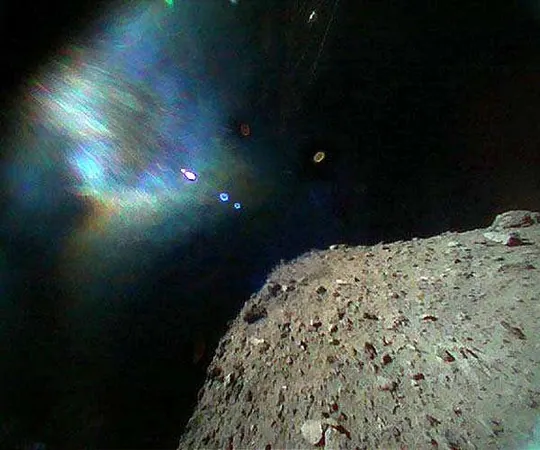
New Insights Suggest Asteroid Ryugu Originates Closer to Jupiter than Previously Believed
2024-09-29
In a groundbreaking study, scientists have discovered that the formation region of the asteroid Ryugu may be much closer to Jupiter than earlier theories suggested. This revelation challenges previous assumptions about the origins of this intriguing near-Earth asteroid, which captured global attention when Japan's Hayabusa2 spacecraft returned samples from it in December 2020.
Since the return of the Hayabusa2 probe, researchers around the world, including notable teams at the Max Planck Institute for Solar System Research (MPS) in Germany, have been meticulously analyzing the precious samples. A predominant focus has been on the metal isotopes contained within the Ryugu material, as these isotopes are critical for understanding the asteroid's place in the Solar System's formation narrative.
Previously, it was thought that Ryugu, which has an orbit that intersects Earth's but presents no threat of collision, hailed from the outer reaches of the Solar System, particularly beyond Saturn. However, new findings from a team in Göttingen reveal that this assumption may not hold true.
The Breakthrough Research
The latest study scrutinized the ratios of nickel isotopes found in four samples from Ryugu alongside six carbonaceous chondrite samples. These comparisons reaffirmed Ryugu's classification as a carbon-rich body, specifically within the rare category of CI chondrites, but also pointed to a surprising twist in the story of its formation.
Despite establishing a strong connection between Ryugu and the CI chondrites, researchers uncovered inconsistencies with earlier models that confined CI chondrites' origins to the Solar System’s outer edges. Instead, new data indicates the presence of a previously unrecognized component: tiny iron-nickel grains, which may have played a significant role during the formation of Ryugu and its CI chondrite relatives.
Lead author of the study, Fridolin Spitzer from MPS, emphasized the need to rethink existing models: "Completely different processes must have been at work in the formation of Ryugu and the CI chondrites compared to other carbonaceous chondrites."
Unlocking the Mysteries of the Early Solar System
Understanding how carbonaceous chondrites like Ryugu formed is crucial for piecing together the early history of our Solar System. It's believed that the accretion of these materials began approximately two million years post the Solar System's inception, as dust particles were drawn towards local gravity well zones, particularly influenced by Jupiter’s massive gravitational pull.
Dr. Christoph Burkhard, also from MPS, expressed astonishment at the study's findings, which prompted a significant reevaluation of not only Ryugu's origins but also those of all CI chondrites. "CI chondrites, once seen as distant relatives from the Solar System’s furthest reaches, may actually be products of a more localized formation process influenced heavily by Jupiter's presence," he remarked.
Thorsten Kleine, director of the Department of Planetary Sciences at MPS, added, "This study underscores the importance of detailed laboratory investigations in deciphering the complex history of our Solar System."
As the scientific community digs deeper into the composition and origins of Ryugu and similar bodies, we may uncover more secrets about our cosmic neighborhood, ultimately helping us understand the origins of not just asteroids, but the very building blocks of life itself. The question that now lingers is: What other celestial mysteries are waiting to be unraveled? Stay tuned as researchers continue to explore the cosmos!



 Brasil (PT)
Brasil (PT)
 Canada (EN)
Canada (EN)
 Chile (ES)
Chile (ES)
 España (ES)
España (ES)
 France (FR)
France (FR)
 Hong Kong (EN)
Hong Kong (EN)
 Italia (IT)
Italia (IT)
 日本 (JA)
日本 (JA)
 Magyarország (HU)
Magyarország (HU)
 Norge (NO)
Norge (NO)
 Polska (PL)
Polska (PL)
 Schweiz (DE)
Schweiz (DE)
 Singapore (EN)
Singapore (EN)
 Sverige (SV)
Sverige (SV)
 Suomi (FI)
Suomi (FI)
 Türkiye (TR)
Türkiye (TR)